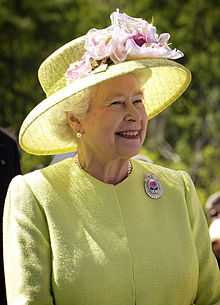Monarchy of Uganda
| Monarchy of Uganda | |
|---|---|
|
Federal | |
|
Coat of Arms of Uganda | |
|
Queen Elizabeth II of Uganda | |
| Details | |
| Style | Her Majesty |
| First monarch | Queen Elizabeth II |
| Last monarch | Queen Elizabeth II |
| Formation | 9 October 1962 |
| Abolition | 9 October 1963 |
| Residence |
Buckingham Palace Government House |
| Appointer | Hereditary |
The Monarchy of Uganda (the Ugandan monarchy) was the system of government in which a hereditary monarch was the sovereign of Uganda from 1962 to 1963. Uganda shared the Sovereign with the other Commonwealth realms. The monarch's constitutional roles were mostly delegated to the Governor-General of Uganda. The royal succession was governed by the English Act of Settlement of 1701.
The monarchy was abolished in 9 October 1963, when Uganda became a republic within the Commonwealth. However, the new Ugandan state was deliberately not referred to as a republic, and the constituent native kingdoms (such as Buganda) continued in existence.
History
The monarch of Uganda was created by the Uganda Independence Act 1963 which transformed the Uganda Protectorate into the independent sovereign constitutional monarchy of Uganda. Uganda adopted a new constitution in 1963 which abolished the monarchy.
List of monarchs
| House of Windsor | |||||||
| Portrait | Name | Birth | Death | Monarch from | Monarch until | Consort | Heir apparent |
|---|---|---|---|---|---|---|---|
 |
Queen Elizabeth II | 21 April 1926 | 9 October 1962 | 9 October 1963 | Prince Philip, Duke of Edinburgh | Charles, Prince of Wales | |
Titles
| Titles |
|---|
| Elizabeth II 9 October 1962 – 2 November 1962 By the Grace of God, of the United Kingdom of Great Britain and Northern Ireland and of Her other Realms and Territories Queen, Head of the Commonwealth, Defender of the Faith 2 November 1962 – 9 October 1963 By the Grace of God, Queen of Uganda and of Her other Realms and Territories, Head of the Commonwealth |
Visits
The Queen and The Duke of Edinburgh visited Uganda in 1954, then as Head of the Commonwealth in 2007.
See also
- President of Uganda
- Governor-General of Uganda
